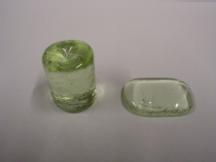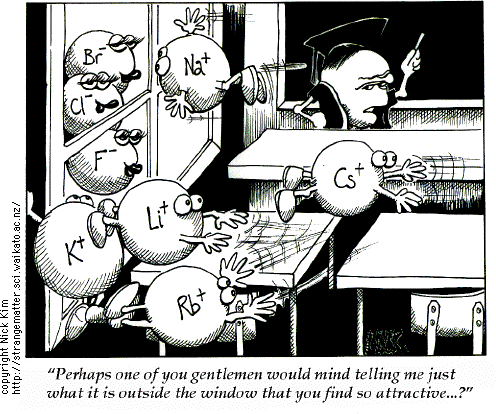Ben Parkinson
Dr Ben Parkinson graduated in the Winter of 2008.
I'm currently a 3rd year PhD student in the Glass-Ceramics Group, at the University of Warwick. After completing my Physics BSc here at Warwick in 2003, I went on to complete a one year research MSc, primarily investigating the problem of caesium-volatilisation from borosilicate glasses used in the vitrification of high level nuclear waste (HLW) (see Publications).
This used the following experimental techniques; 11B, 29Si and 133Cs MAS NMR spectroscopy, thermal analysis techniques (DTA and mass-loss measurements), density measurements and Raman spectroscopy.
This led onto my current PhD research, again under the supervision of Dr Diane Holland and Prof. Mark Smith, expanding on both the compositional range of borosilicate systems studied, as well as the range of techniques used. This now includes the use of high-temperature 11B NMR, 17O MAS NMR (on sol-gel prepared, oxygen-17 enriched samples) and Simultaneous Thermal/Thermogravimetic analysis (STA).
As well as work on high-temperature volatilisation effects of borosilicate glasses, I am also interested in a variety of other projects;
- The phenonmenon of multiple four-coordinated boron sites in the 11B MAS NMR spectra of borate and borosilicate glasses.
- The quantitative use of Raman spectroscopy to measure silicon units in silicate and borosilicate glasses.
- The presence of medium-range order superstructural units in borate and borosilicates.
- Magnetic effects in Cobalt Borate and porous borosilicate glasses.
Often this work has been collaborative with groups in the UK and USA - see Collaborators (right)
The section(s) below give more information on the theory and aims of my research
Introduction To Research
Glasses have a variety of applications in industry, ranging from optical devices [] to storage materials [] to biological implants []. The compositional properties for glasses is also numerous and so the physical and thermal properties throughout the range of possible systems require a number of experimental approches, to fully catalogue their structural details.
Borate and borosilicate glasses inparticular have many uses in industry because of their relatively low melting points, high resistance to thermal shock and non-linear physical and optical properties. Applications range from use in optical cables, temperature-resistant laboratory glass-ware and in the vitrification and long-term storage of high-level nuclear waste (HLW) - which is of primary interest to me [1,2,3].

Nuclear Borosilicate Glasses
In the UK and USA alkali borosilicate glasses are currently the material of choice for the vitrification and long-term storage of HLW because of its chemical and thermal properties, ease of processing and ability to hold large quantities of waste. Because HLW is a complicated material in itself – containing many different oxides, a large amount of research has been conducted to understand the various affects to the glass upon addition to HLW [7,8,9].
Much research over the past five years has been carried out at the Glass-Ceramics group at Warwick University on different alkali borosilicate glasses doped with a variety of different oxides present in HLW [10,11,12,13,14]. These range from aluminium oxide, lanthanum oxide, Group I and II alkalis, iron oxide and lead oxide, all in vary quantities to increase our understanding of the thermal, physical and structural properties of each glass system.

Caesium Volatility in Nuclear Borosilicate Glasses
One of the most important problems currently effecting the storage of HLW is the evolution of a highly reactive caesium-containing gas [15,16,17,18,19,20] from the glass melt at high temperature, when HLW is added. This gas then condenses and is a serious problem.
Research carried out over the last three years has been focussed on understanding this problem in terms of a number of factors;
- How is the production of the volatile gas effected by composition?
- What is the compositional make-up of the gas?
- How does chemical composition of the glass effect overall glass volatility?
This uses a variety of experimental techniques, including solid-state 11B, 29Si, 27Al and 23Na magic angle spinning nuclear magnetic resonance (MAS NMR) [], Raman spectroscopy [], differential thermal analysis (DTA) and simultaneous themal/thermogravimetric analysis (STA) and volatilisation mass-loss measurements [].
Glass samples are prepared using a standard powder carbonate-melt technique [] with oxygen-17 enriched samples being manufactured for 17O MAS NMR, using techniques outlined by []. These involve using oxygen-17 enriched SiO2, manufactured using silicon tetrachloride and enriched H2O.
